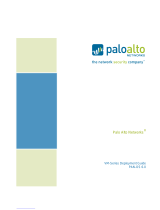
Before You Begin
Before you begin, review this guide to understand the process as well as the pre-
paration, time, and resources you'll need to plan for the installation and configuration.
Hardware
lInstallation: Make sure you install your appliance hardware (physical appliances)
using the Stealthwatch x210 Series Hardware Installation Guide before you con-
figure them using this guide.
lSpecifications: Hardware specifications are available on Cisco.com.
lSupported Platforms: To view the supported hardware platforms for each sys-
tem version, refer to the Hardware Version and Support Matrix on Cisco.com.
lWork Flow: See Quick Reference Workflows to review the instructions you'll
need to configure your hardware.
Virtual Appliances
You can use a VMware environment or KVM (Kernel-based Virtual Machine) for the vir-
tual appliance installation. It is important to review the following compatibility inform-
ation:
VMware
lCompatibility: VMware v6.0 or v6.5.
lEnvironment: You can install your virtual appliances on VMware vCenter or on an
ESXi stand-alone server. Refer to 2a. Installing a Virtual Appliance using
VMware for details.
lOVF Deployment: We validated VMware v6.5 using update 2 and the vSphere
flash web client. There may be issues using other clients from vSphere. You can
use the ESXi 6.5 update 2 HTML5 client, but you may encounter system time-
outs.
lVMware Upgrades: Stealthwatch VE appliances that are running on older ver-
sions of VMware are not compatible with v6.5. If you upgrade your VMware envir-
onment to v6.x, delete your existing Stealthwatch VE appliances and reinstall
them.
lLive migration (for example, with vMotion) from host to host is not supported.
lSnapshots:Virtual machine snapshots are not supported.
Copyright © 2019 Cisco Systems, Inc. All rights reserved. - 11 -
Before You Begin






















